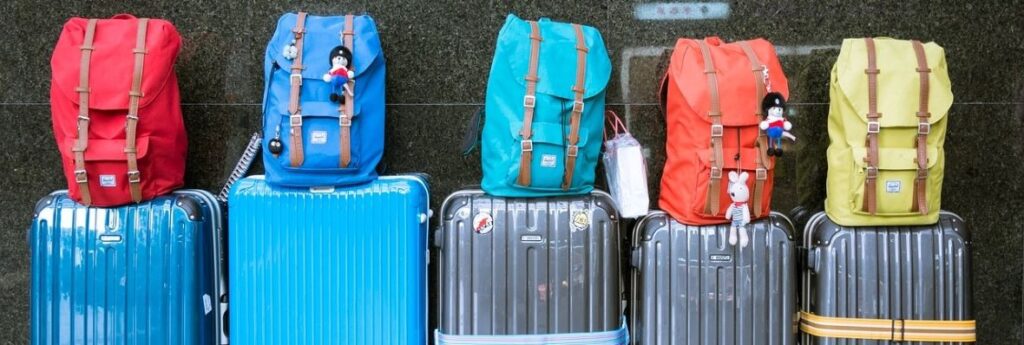As COVID-19-related restrictions lift and demand for travel returns, airport goers are left wondering yet again if checking a bag is worth it. On top of the hefty costs, travellers are also grappling with the growing concern that their luggage may never even reach their final destination.
“Why am I paying an extra fee to check a bag with the possibility of not knowing if it’s even going to get to me or get to my destination?” asks Jennifer Weatherhead, founder of the website travelandstyle.com and frequent traveller who has not checked in a bag in more than 12 years.
Air Canada changed its policy on sun destinations, removing the option of a complimentary checked bag from all cross-border flights in North and Central America. Prices for a second bag rose to $100 from $50 on select flights to all other international destinations including Europe and Asia.
WestJet also changed its checked luggage policy this summer. Now, customers are encouraged to pay for a checked bag in advance as the airline introduced a $10 fee for passengers who pay for a checked bag less than 24-hours before their flight’s departure.
To compete with legacy airlines, several competitors have entered Canada’s commercial airspace – Flair Airlines, Lynx Air, Canada Jetlines and WestJet’s ultra-low-cost carrier, Swoop.
Many of these airlines operate under the unbundled, ultra-low fare model. Customers only pay for the amenities they want with a base fare that starts with only a seat, said Swoop spokeswoman Julia Brunet.
For a long time, Canadians didn’t have many options in terms of flight prices, Weatherhead said. Especially when considering domestic flights – where cross-country flights can run more expensive than a flight to the Caribbean.
However, the impressive prices from these new carriers may not be attractive as they seem, as when it is time to check out, those unbundled fees can add up, Weatherhead said.
The price of a printed ticket, seat selection, checked and carry-on luggage and food and drink are all at an additional cost, she said. What is included – the seat and a personal item, such as a laptop case or tote bag.
Bought in advance, a carry-on item could run anywhere from $25 to $42, depending on the airline and flight duration – and at the gate, the same bag could cost up to $64 with Flair and $90 with Swoop, according to their websites.
Swoop offers a one-way flight from Toronto to Varadero, Cuba for $189. However, after adding the price of a seat, insurance, carry-on and checked luggage, the total comes to $319. Whereas the same flight on Air Canada with seat selection and checked luggage comes to a total of $329, a $10 difference in all, not including the cost to print a ticket or food and drink.
Sunwing has also recently planned to adopt this model. Starting Oct. 24, passengers will be charged a fee of $25 for carry-on items. The move was a part of the airline’s plan to reduce costs and ensure customers pay only for the services they want and need, said Sunwing spokeswoman Melanie Filipp.
The move from domestic business travel to low-cost leisure has some concerned with the quality of service low-cost carriers provide, including air passenger rights advocates, who say that it is not reasonable to sell a ticket without a carry-on since it is a part of normal travel.”
Yet, for some, including Weatherhead, the risk associated with losing or damaging a bag is too great to entertain checking luggage.
Flight delays and missed connections both increase the risk of a bag arriving late or not at all. Airlines are required to compensate up to $2,300 for luggage lost or damaged on domestic flights, according to the Canadian Transport Agency. However, many travel experts say that valuable items including medication should never be checked in at the airport, as items are much safer when on one’s person.
The travel expert also recommends checking luggage size requirements and the type of plane you are flying with as soon as you book your flight. She said the last thing you want to do is go through the process of packing a carry-on only to show up and find there is not enough space on a small plane.
Travellers can also check carry-on size requirements on the respective airlines’ websites. While the size of carry-on luggage typically remain at 55 cm in length, Air Transat and Sunwing do not allow bags longer than 51 cm.
Beyond comparing flights between airlines, consider if the basic fare option is best for you. If you are planning to check in one or more bags, a more flexible, premium option may be of better value.
“Make sure you read that fine print to know exactly what is covered,” Weatherhead said.

